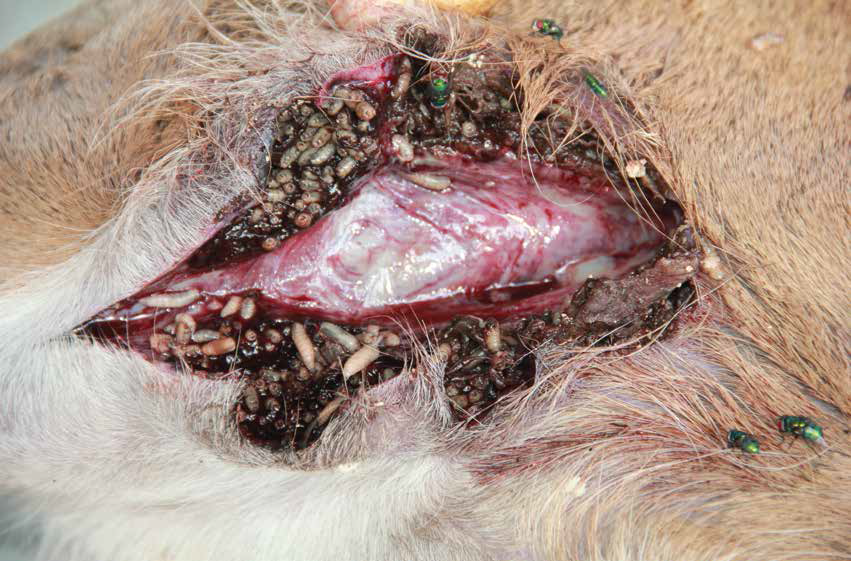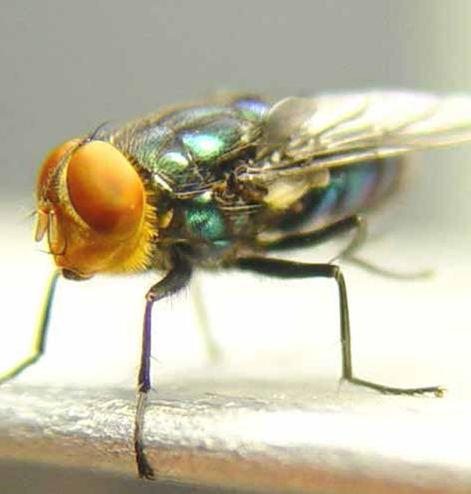Current Outbreak: Central America and Mexico
What You Need To Know: New World screwworm myiasis
Screwworms are fly larvae (maggots) that feed on living flesh. These parasites infest all mammals and, rarely, birds. Humans can be hosts for screwworm larvae.
Two different species of flies cause screwworm myiasis: New World screwworms (Cochliomyia hominivorax) occur in the Western Hemisphere, and Old World screwworms (Chrysomya bezziana) are found in the Eastern Hemisphere. However, the climatic requirements for these two species are similar, and they could become established in either hemisphere. Screwworms are very susceptible to freezing temperatures or long periods of near–freezing temperatures. These organisms are seasonal in some areas, and can spread into colder climates during the summer.
Screwworms can infest a wide variety of wounds, from tick bites to cuts and dehorning or branding wounds. Infestations are very common in the navels of newborns, and the vulval and perineal regions of their dams. If a screwworm deposits its eggs on mucous membranes, the larvae may enter any orifice including the nostrils, sinuses, mouth, orbits of the eye, ears or genitalia.
In the first day or two, screwworm infestations are difficult to detect. Often, all that can be seen is slight motion inside the wound. As the larvae feed, the wound gradually enlarges and deepens. Infested wounds often have a discharge and sometimes a distinctive odor. By the third day, the larvae may be easily found; as many as 200 vertically oriented parasites can be packed deep inside the wound. Screwworm larvae do not generally crawl on the surface, and tend to burrow deeper when disturbed. Sometimes, there may be large pockets of larvae with only small openings in the skin. Screwworms may be particularly difficult to find inside the nasal, anal, preputial and vaginal openings. In dogs, the larvae often tunnel under the skin. Larvae from other species of flies, which feed on dead and decaying tissues, may also infest the wound. These larvae are often found more superficially than screwworm larvae. Secondary bacterial contamination is also common.
Female flies lay their eggs at the edges of wounds or on mucous membranes. When they hatch, the larvae enter the body, grow and feed, progressively enlarging the wound. Eventually, they drop to the ground to pupate and develop into adults. Screwworms can enter wounds as small as a tick bite. Left untreated, infestations can be fatal. Screwworms have been eradicated from some parts of the world, but infested animals are occasionally imported into screwworm-free countries. These infestations must be recognized and treated promptly; if the larvae are allowed to leave the wound, they can introduce these parasites into the area.


Related Resources
North Dakota State Board of Animal Health
State Board of Animal Health
600 E Boulevard Ave.
Dept.602
Bismarck, ND 58505-0020
701-328-2655
Fax: 701-328-4567

